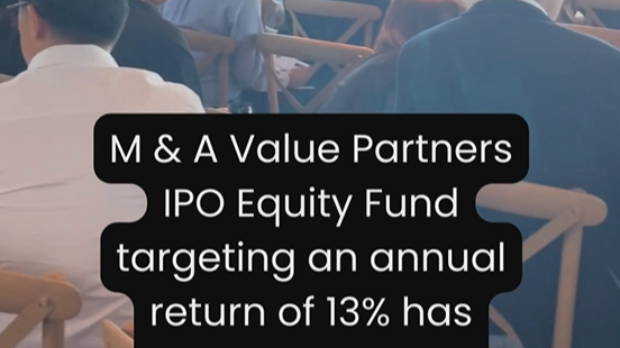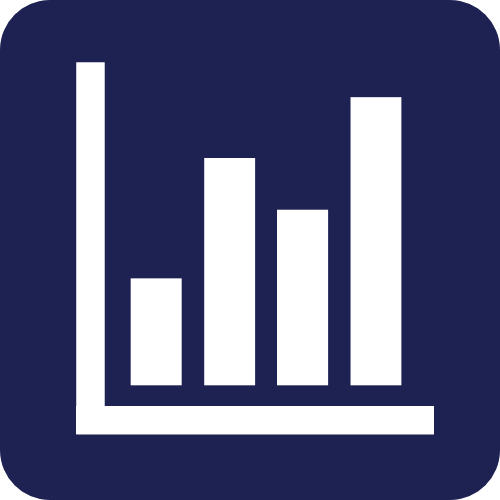Banking - Ending 2024 with 5.5% loan growth
- Seasonal slowdown in system loan applications growth, yet stronger YoY growth show strong resilience
- Dec24 system GIL ratio at 1.44%, driven by sharp MoM improvements in business GILs
- Reiterate OVERWEIGHT on the sector. Sector picks include liquid large-cap with strong ASEAN footprint (CIMB, TP: RM9.30), defensive banks with strong asset quality (PBB, TP: RM5.10; HLB, TP: RM24.30), high dividend yielders (RHB, TP: RM7.50; Maybank, TP: RM11.40), and a small-cap exposure (AMMB, TP: RM6.30)
System loans growth remains stable in Dec24
System loans grew by 0.8% MoM in Dec24 (Nov24: +0.6%), driven by increases in working capital loans (+1.1%), mortgages (+0.5%), and loans for non-residential properties (+1.3%). On a YoY basis, system loans expanded by 5.5% (Nov24: +5.9%), supported by growth in non-household loans (+2.0% YoY; Nov24: +2.2%) and household loans (+3.6%; Nov24: +3.7%). Loan applications, however, declined by 4% MoM, due to a 9.3% drop in the non-household segment, cushioned by 0.7% increase in the household segment. This MoM decline is largely attributed to seasonal factors, which are typical towards year-end. On a more comparable YoY basis, household loan applications fell by 1.9%, while non-household segments increased by 4.6%. The average lending rate eased by 2bps MoM at 5.11%.
System deposits accelerate in Dec24
System deposits grew by 0.7% MoM (Nov24: +0.9%), with broad base growth led by 1.2% MoM increase in CASA deposits. Fixed deposits (FD) remained stable, posting a modest 0.3% MoM growth. As a result, CASA ratio improved to 31.4%, up from 31.3% in Dec24. The loan-to-deposit (LDR) ratio remained steady at 87.8%. Most FD tenures saw marginal rates decline MoM after holding steady in Nov24. The sharpest decline was observed in 1-month FD rates, which fell by 13bps to 2.42%, following a 6bps MoM increase in Nov24. Meanwhile, 3-month FD rates edged up by 1bps in Dec24 to 2.69% in Dec24. The pullback in short-term rates signals a normalization of competition after Nov24, when banks likely prioritized short-term deposits products to address higher liquidity needs during the festive season while managing costs.
Asset quality continues to improve
Asset quality continued to improve in Dec24, with the overall system gross impaired loan (GIL) decreasing by 3.8% MoM and 7.7% YoY. The GIL ratio improved to 1.44% (-7bps MoM). Household GILs decreased by 2.1% MoM and 6.5% YoY, with previous weaknesses in the auto segments showing signs of recovery. Business GILs decreased by 5.1% MoM and 8.4% YoY, driven primarily by improvements in the transport, storage and communication segment. The loan loss coverage (LLC) ratio increased 0.2ppt MoM to 91.4%.
Stay OVERWEIGHT, Pecking order BUYs: CIMB > AMMB > HLB > PBB > RHB > Maybank
We maintain our OVERWEIGHT stance on the Malaysian banking sector, with the sector currently trading at 1.12x 2025E PB, in line with a 10-year average multiple of 1.14x. We like CIMB (BUY; TP: RM9.30) as a liquid large-cap with strong ASEAN footprint, PBB (BUY; TP: RM5.10) and HLB (BUY; TP: RM24.30) for their defensive nature and solid asset quality. We also have BUYs on RHB (BUY; TP: RM7.50) and Maybank (BUY; RM11.40) for their attractive dividend yields. We like AMMB (BUY; TP: RM6.30) as a preferred small-cap bank pick.
Pecking order BUYs: CIMB > AMMB > HLB > PBB > RHB > Maybank
- CIMB (CIMB MK, BUY; TP: RM9.30) is our preferred large-cap pick. CIMB's exposure to Indonesia through CIMB Niaga (loans/PBT group contribution: 15%/24%) and Singapore (loans/PBT: 10%/15%) is expected to mitigate some domestic NIM pressures and loans shortfall, particularly as the easing policy rate cycle is projected to expand estimated group NIM by +6bps to 2.37% in 2025E. The easing of funding pressures would potentially enhance loan volumes, crucial for CIMB's funding-led strategy. Furthermore, CIMB's sizable ASEAN market share compared to domestic peers offers ample opportunities for cross-border transactions and financing. We believe the anticipated decline in non-interest income will be manageable in the near term, as the bank is positioned to leverage market volatility and optimism surrounding potential further FFR cut, which should boost volumes and improve spreads. In the longer term, non-interest income is expected to be supported by expanding the fee income base. Given CIMB's robust dividend outlook, discipline strategy to drive ROE, favorable macroeconomic conditions, and the return on foreign interests, we believe a premium valuation is justified. Our key assumptions include sustainable ROE of 11.2%, cost of equity of 9.4%, and long-term growth of 3.5%.
- AMMB (AMM MK, BUY; TP: RM6.30) stands out as one of the most efficient small-sized banks, with a commendable CIR of 44% in 1QFY25. We anticipate FY25E core earnings growth of +14% YoY, driven by sustained NIM expansion (FY25E estimated NIM +14bps to 1.98%), bolstered by optimized funding costs due to ample liquidity in the capital market. We see opportunities for AMMB to grow its non-interest income, recognizing that it has yet to fully capitalize on its unrealized profits, providing potential for earnings growth in the coming quarters. Following the completion of capital rebuilding program, AMMB is well-positioned to implement capital-strengthening initiatives and enhance distribution capabilities, suggesting a possible increase in dividend payout ratio (DPR) to 50%. AMMB targets a higher ROE of 11-12% by FY29 under its FY25-29 Winning Together strategy (derived from its 1.1% ROA target). Our key assumptions are sustainable ROE of 9.7%, cost of equity of 9.9% and long-term growth rate of 3.5%.
- Hong Leong Bank (HLBK MK, BUY; TP: RM24.30). HLB demonstrates qualities typical of a defensive bank, akin to PBB. Despite a relatively smaller asset base (ranked 5th), HLB consistently delivers one of the highest ROE/ROA among its peers at 11.8%/1.5%, respectively, largely due to significant earnings contributions from its associate, Bank of Chengdu (BOCD). HLB is enhancing its digital capabilities, having recently introduced an AI voice bot trained for various roles, which is expected to improve operational efficiency and customer experience. HLB targets loan growth of 6-7% for FY25 and continue to pursue double-digit growth in key segments, such as community SME banking (FY24: +13.9% YoY) and SME (FY24: +13.6% YoY), which collectively make up 29% of the total loan book. HLB aims to maintain healthy net credit costs below 10bps. Our key assumptions are a sustainable ROE of 11.6%, a cost of equity of 10.4%, and a long-term growth rate of 3.5%.
- Public Bank (PBK MK, BUY; TP: RM5.10). PBB is recognized as a quality name within the banking sector, consistently achieving one of the highest asset qualities. PBB has low credit costs (9M24: 1bps) and a GIL ratio at 0.62%, below the industry average of 1.54%, with a strong LLC of 154% and robust capital position (CET1: 14.3%). While management indicates that NIM may remain under pressure, compressing by up to -3bps in 2024E, we expect pre-impairment operating profit (PIOP) to grow by +6% YoY, driven by an expanding asset base and sustainable fee income. Operating expenses may rise by 5% YoY due to increasing staff costs and tech investments, but CIR is expected to anticipated to remain manageable at 33%. Potential writebacks from overlays could enhance earnings (3Q24 overlays: RM1.5bn). The recent strategic acquisition of LPI (non-rated) at an attractive 1.6x consensus 2024E P/BV is expected to enhance ROE through synergies. We are less concerned about the share overhang issues and continue to advocate a BUY on PBB for its solid fundamentals. Our key assumptions are a sustainable ROE of 12.2%, a cost of equity of 8.9%, and a long-term growth rate of 3.5%.
- RHB (RHBBANK MK, BUY; TP: RM7.50) offers reasonable valuations with a sector-high dividend yield, although we believe RHB has a greater exposure to certain market dynamics compared to peers: (i) interest income sensitivity – relatively lower proportion of fixedrate loans (3Q24: 9.7%) and a high proportion of FDs (3Q24: 72%), (ii) volatility in noninterest income (32% of 3Q24 operating income) due to a high proportion of FVOCI investment securities (58% of total investment securities), (iii) asset quality concerns– domestic GIL at 1.54% (group: 1.77%, Thailand: 32%) coupled with a sector low LLC of 70.6%. That said, RHB is well-capitalized with a CET1 ratio of 16.6%. While concerns over asset quality are primarily focused on SME sector and overseas operation, the risk-reward profile appears favorable, given its undemanding valuations of 0.92x 2025E P/BV against 10% ROE, alongside high dividend yield of c.6%. We expect NIM to remain stable, supported by cost of funds optimisation through liability management initiatives and the realisation of CASA balances, driven by efforts in the education and tourism sectors. Loans growth is anticipated to remain strong, particularly in key regions such as Johor, Klang Valley & Selangor, Penang, and Sarawak. Management plans to explore opportunities in the thematic sectors such as data centre, healthcare and manufacturing, while maintaining a selective approach to residential mortgages. Our key assumptions are sustainable ROE of 10.1%, cost of equity of 9.9% and long-term growth rate of 3.5%.
- Maybank (MAY MK, BUY; TP: RM11.40). Maybank has made notable progress toward its M25+ ROE target of 11–12% (9M24: 11.2%). As it moves into 4Q24 and 2025, a key focus will be on preserving NIMs. Our target price is based on a 1.37x 2025E P/BV (near +2SD from the 10-year mean), which we believe is warranted given its improved ROE and asset quality, its position as Malaysia’s largest bank, and an appealing 2025E dividend yield of 6%.
Key risks to our Overweight stance include contagion risk from geopolitical issues, extended NIM compression, asset quality deterioration, higher inflationary pressures from upcoming removal of subsidies affecting repayment ability, and weak economic growth.
Source: Philip Capital Research - 3 Feb 2025




















